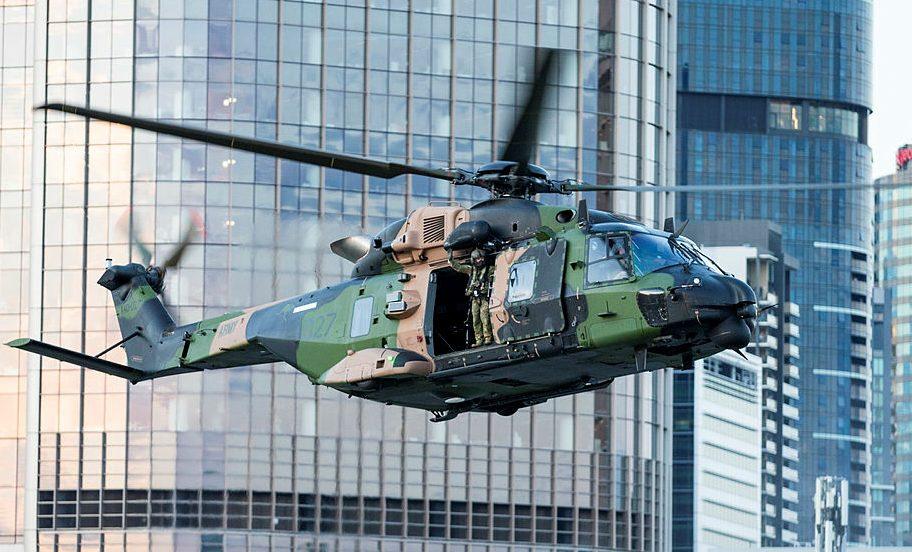
Sea state
HMS Queen Elizabeth has returned home from its seven-month maiden deployment to the Indo-Pacific. The aircraft carrier led Carrier Strike Group 21, which cumulatively covered around 500,000 nautical miles, visited more than 40 countries and participated in various naval exercises with partners including Australia. One F-35B fighter jet crashed into the sea on take-off from the carrier, but the pilot survived and the wreckage was retrieved. There was also a stand-off between the Russian navy and UK destroyer HMS Defender when it sailed near Crimea.
USS Connecticut, one of the US Navy’s three Seawolf-class nuclear attack submarines, has arrived in San Diego with visible damage to its bow after an October collision. The boat hit an unmapped seamount in the South China Sea, injuring 11 crew members and removing the vessel’s sonar dome. Deemed unsafe for underwater travel, it returned by surface after a damage assessment and initial repairs in Guam. It’s likely to undergo repairs at Puget Sound Naval Shipyard in Washington state, though the shipyard is heavily tasked and needs upgrades to meet demand.
Flight path
Last Friday, the Australian Defence Force announced plans to retire its fleet of 47 MRH-90 Taipan helicopters ahead of their planned 2037 retirement, replacing them with US-made UH-60 Black Hawks and SH-60 Seahawks. Following the navy’s decision to replace its six Taipans with 12 Seahawks in October, the army is now scrapping its 41 Taipans for up to 40 Black Hawks. The ADF’s Taipan fleet has suffered a litany of groundings and safety and maintenance issues, and its early retirement marks the end of a more than $3 billion investment.
The first Royal Australian Air Force F-35A jets to be permanently stationed at RAAF Base Tindal arrived in the Northern Territory from RAAF Base Williamtown on 2 December. The four F-35As will be joined in 2022 by 12 more to replace the recently retired F/A-18A/B Hornets. Defence Minister Peter Dutton noted that the Tindal squadron would strengthen the RAAF’s airpower projection in Australia’s immediate region and bolster interoperability with US rotational aircraft deployments.
Rapid fire
Australia has entered a billion-dollar weapons contract with South Korean company Hanwha to provide 30 K-9 self-propelled howitzers and 15 armoured ammunition resupply vehicles. The formalising of the agreement coincided with a new comprehensive strategic partnership announced during President Moon Jae-in’s four-day visit to Australia. The agreements could pave the way for stronger bilateral defence-to-defence cooperation and capability sharing. It also puts Hanwha in a much stronger position to win future Australian defence contracts, including for up to 450 infantry fighting vehicles under LAND 400 Phase 3.
India’s chief of defence staff, General Bipin Rawat, and 12 others were killed in a helicopter crash in the country’s south last Wednesday. Appointed in 2019, Rawat was leading India’s military modernisation initiatives and a restructuring of the country’s armed services, including establishing joint theatre commands to combine some of India’s 17 single-service commands. Rawat’s death leaves a critical role vacant with no clear successor, as the Indian government searches for a replacement to conclude his ‘unfinished work’.
Final frontier
The first in a planned network of global passive radars known as ‘Oculus’ opened in outback South Australia last week. Given an increase in space launches and a growing awareness of Kessler syndrome, the Oculus Observatory is envisaged as tracking both catalogued and unknown objects in low-earth orbit before alerting either governments or private stakeholders ‘when their space infrastructure is in danger of a collision’. The Australian government provided almost $1.5 million for the observatory through its international space investment initiative.
Japanese billionaire Yusaku Maezawa launched to the International Space Station for a 12-day stay last week, as the first space tourist to the station since 2009. Maezawa’s voyage aboard a Russian Soyuz spacecraft from Baikonur cosmodrome in Kazakhstan, which reportedly cost him more than US$122 million, is a prelude to his planned trip around the moon on a SpaceX Starship reusable rocket in 2023—for which he will be the first private passenger. The launch represents Russia’s return to space tourism as competition from US companies increases.
Wired watchtower
On Sunday, Australia, Japan and the US announced that they will jointly fund the development of undersea cables in Nauru, Kiribati and Micronesia. The new infrastructure will provide high-speed internet access across the Pacific without the need to route traffic through Sydney, Guam or Hawaii. Some see this investment as an attempt to dissuade Pacific nations from accepting cable supplies from China. The commercial fibre-optic cables that China has proposed are more suitable for intelligence gathering than satellites, which has raised concerns among Western allies about regional security.
Former employees of TikTok say that the company is tightly controlled by its Beijing-based parent, ByteDance, and that California-based staff are sometimes required to work double shifts so they’re available during Chinese business hours. The CNBC report comes amid longstanding accusations that TikTok poses national security risks. The US government contends that the video-streaming app could be used to spy on residents, spread misinformation and censor free speech. Cybersecurity experts warn that under Chinese law ByteDance would be obliged to hand over TikTok user details to Chinese authorities if requested.